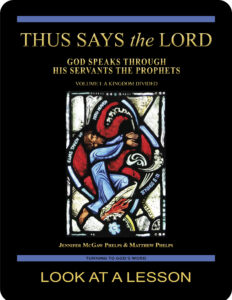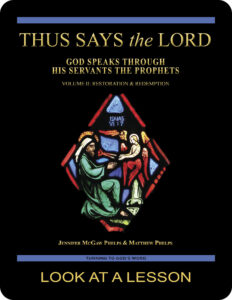neighbor
 Who is your neighbor? The setup to the parable of the Good Samaritan in the Gospel According to Luke 10:25–29 (NABRE) presents an interesting linguistic anomaly that arises between the Hebrew Old Testament and the first Greek translation of it, the Septuagint.
Who is your neighbor? The setup to the parable of the Good Samaritan in the Gospel According to Luke 10:25–29 (NABRE) presents an interesting linguistic anomaly that arises between the Hebrew Old Testament and the first Greek translation of it, the Septuagint.
Jesus and a scholar of the law are discussing the most important of God’s commandments, which in the Gospel According to Luke 10:27 (NABRE) the scholar cites as: “You shall love the Lord your God with all your heart, with all your being, with all your strength, and with all your mind; and your neighbor as yourself.” This combines passages from two books in the Torah—the book of Deuteronomy 6:4 (NABRE) and the book of Leviticus 19:18 (NABRE). When Jesus confirms the scholar’s answer, the scholar asks a fascinating follow-up question to clarify: “And who is my neighbor?”
The Hebrew word from the book of Leviticus 19:18 (NABRE) translated as “neighbor,” rea, means “friend,” “companion,” or “associate” from the same root as a verb that means “to associate with.” This meaning of “someone we know” is what we typically think of when we see this passage.
In the Septuagint and in the Gospel According to Luke, however, the word has a different shade of meaning. The Greek word πλησίος (plesios) means “near” or “close to.” The Greek concept of neighbor has a spacial meaning that is absent in the Hebrew.
What we see in the setup to this parable of the Good Samaritan is an underlying linguistic tension. The scholar of the law sees one’s neighbor as an associate. Jesus’ use of the parable drives home the fact that the linguistic shift in meaning also marks a theological shift, so that one’s neighbor can be anyone nearby.
related topics: agape; brothers; philia & agape
you also may like our two-part study of the prophets

 Thus Says the LORD: God Speaks Through His Servants the Prophets—Volume I: A Kingdom Divided examines the prophets in their historical context using the First and Second Books of the Kings and other Old Testament passages written before the Babylonian Exile in 586 B.C. Volume II: Restoration & Redemption looks at the post-exilic prophets. This 51-lesson Catholic Bible study builds on The United Kingdom of Israel: Saul, David & Solomon Foreshadow Christ the King. Click on the books’ covers to view a sample lesson from each volume.
Thus Says the LORD: God Speaks Through His Servants the Prophets—Volume I: A Kingdom Divided examines the prophets in their historical context using the First and Second Books of the Kings and other Old Testament passages written before the Babylonian Exile in 586 B.C. Volume II: Restoration & Redemption looks at the post-exilic prophets. This 51-lesson Catholic Bible study builds on The United Kingdom of Israel: Saul, David & Solomon Foreshadow Christ the King. Click on the books’ covers to view a sample lesson from each volume.
 Click on the picture of the statue of Moses with horns (above) to learn more about Lost in Translation. A new entry is archived each Monday. Contact us to receive Lost in Translation by email every week. You may use any of the contact links on our website to ask Matthew a question.
Click on the picture of the statue of Moses with horns (above) to learn more about Lost in Translation. A new entry is archived each Monday. Contact us to receive Lost in Translation by email every week. You may use any of the contact links on our website to ask Matthew a question.
